|
|
|
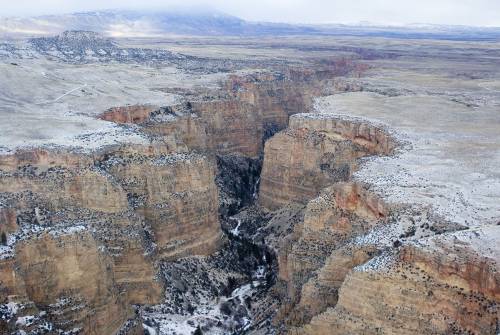 LOVELL–
After three weather related postponements, the window of opportunity for
Wyoming finally opened when Montana Fish, Wildlife, and Parks Department
resumed their bighorn sheep capture effort—resulting in 20 Rocky Mountain
bighorn sheep for the northwest flank of the Bighorn Mountains. LOVELL–
After three weather related postponements, the window of opportunity for
Wyoming finally opened when Montana Fish, Wildlife, and Parks Department
resumed their bighorn sheep capture effort—resulting in 20 Rocky Mountain
bighorn sheep for the northwest flank of the Bighorn Mountains.
The transplant of 13 ewes, two yearling rams, and five lambs took place
January 19, 2006. This completes the second and final phase of the Devil’s Canyon
supplemental bighorn sheep transplant project. The sheep were released on
the north rim of Devil’s Canyon, northeast of Lovell.
“We are very happy that the final phase of this transplant project is
complete,” said Kevin Hurley, Wyoming Game and Fish Department’s Cody
region wildlife management coordinator. “It was frustrating at times.
Logistically, there is a great deal of coordination that must take place,
but once the sheep were captured and arrived safely in Lovell, everything
came together in a very efficient manner,” he said.
|
|
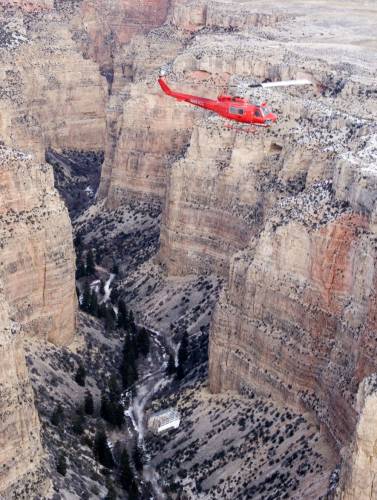 |
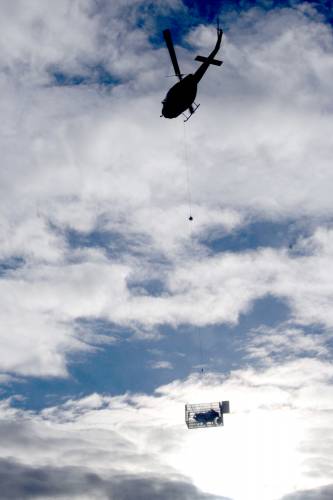 |
Department personnel left the
capture area near Havre, MT around 3 p.m. on Wednesday, January 18. They
arrived in Lovell shortly after midnight. The following morning,
approximately 30 individuals converged in the Bighorn Canyon National
Recreation Area’s Horseshoe Bend marina parking lot to begin the
transplant. Upon the arrival of two helicopters from Billings MT Flying
Service, workers were transported to the release site and ground crews
manned their positions.
Utilizing a specially designed transport cage, eleven bighorns were
transferred from the “ewe haul” horse trailer into the cage and then
long-lined to the release site by a 1973 Vietnam war-era Huey helicopter.
The remaining nine sheep were transported in the same manner during a
second trip.
All of the sheep were fitted with either a radio collar or ear tag
transmitter immediately after their capture in Montana, thereby eliminating
the need to physically handle the sheep once they arrived in Wyoming,”
Hurley said. He added that the sheep would be monitored very closely for
the next couple of years. |
|
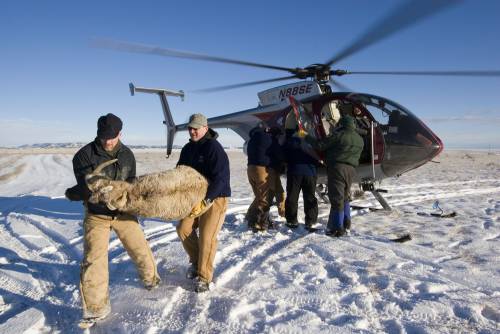 |
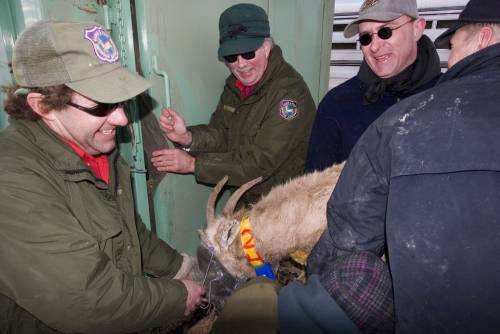 |
The first phase of this project
was completed in December 2004, when 14 ewes, three lambs and three rams
captured in the Lower Deschutes River area of Oregon were transplanted to
Devil’s Canyon. Thirty-one years earlier, 39 sheep from the Whiskey Basin
area near Dubois, Wyoming were transplanted to Devil’s Canyon, but only a
few remained.
With the latest release of Montana bighorns, the population estimate for
the Devil’s Canyon herd is approximately 110; the population objective is
200.
As we near our objective, we hope to allow a limited amount of hunting and
will begin to consider using this herd as a source herd for transplanting
bighorns into other low elevation sites, Hurley said.
There are currently 15 distinct bighorn herd units in Wyoming. According to
Hurley, eight core, native herds occur in the Absaroka, Teton, Gros Ventre,
and Wind River Mountains. These herds represent over 90% of Wyoming’s wild
sheep. |
|
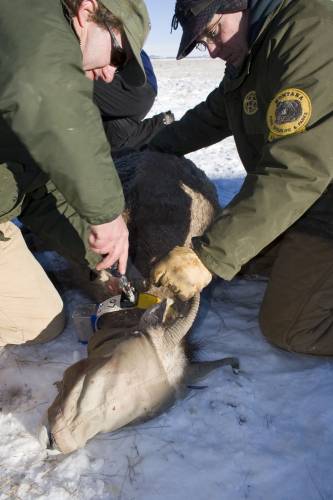 |
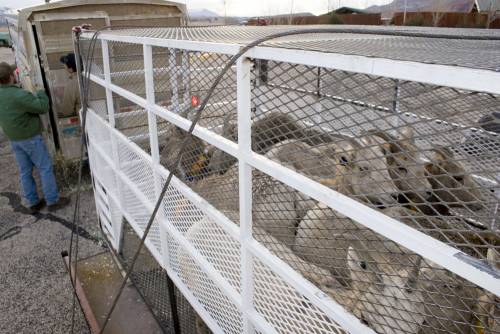 |
| Funding for this project has
largely come via the generosity of Wyoming Governor Dave Freudenthal. In
2003, the Governor dedicated all proceeds from the auction/raffle of 20
annual Wyoming Governor’s complimentary big game licenses to fund projects
to benefit Wyoming’s wildlife. The Wyoming Chapter of the Foundation for
North American Wild Sheep is also a major partner and supporter of the
Devil’ s Canyon supplemental transplant. |
|
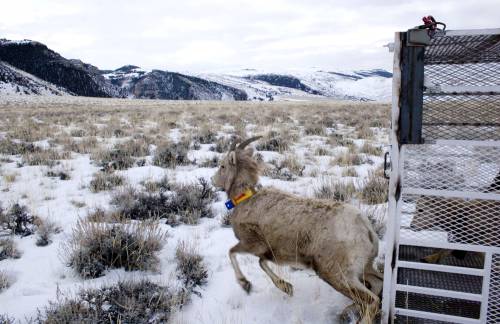 |
|
| |
|
|
|